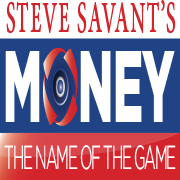 Mesa 4/13/2018 10:00:00 AM
Mesa 4/13/2018 10:00:00 AM
News / Finance
Mutual Fund & Indexed Fund Real Costs
All Financial Products Have Associated Costs, But Are They Fully Disclosed

The idea of diversification is that it’s smarter to own a variety of stocks and bonds than trying to meet your financial goals based on the successful performance of just a few. But diversifying can be a challenge because buying a portfolio of individual stocks and bonds can be expensive. And knowing what to buy—and when—takes time and concentration. Mutual funds offer one solution: When you put money into a fund, it’s pooled with money from other investors to create much greater buying power than you would have investing on your own. In an actively managed fund, professional managers decide what to buy and when to sell. An index, or passively managed, fund holds all or some of the securities in an index. As a fund shareholder, you own the fund’s underlying investments indirectly rather than outright, as you do when you buy stock. Since a fund may own dozens of different securities, its return isn’t dependent on just a few holdings.
Like stocks, ETFs are listed on a securities exchange, purchased through a brokerage account, and traded throughout the day at prices set by supply and demand and other market forces. You can give limit as well as market orders. You can sell ETFs short, buy them on margin, and on some but not all, purchase options contracts. Like mutual funds, each ETF owns a portfolio—typically referred to as a basket—of securities appropriate to its investment objective, which is stated in its prospectus. Similarly as well, an ETF provides its shareholders with the opportunity to benefit from the collective performance—or share the losses—of the fund’s underlying investments without having to purchase them individually.
Both of these investment products expense charges, have marketing costs cited in the SAI and sometimes cash drag associated with the funds liquidity. This doesn’t include taxes nor admin fees in qualified plan management.
Contributions from the books Investing Essentials and Guide to Exchange Traded Funds in this press release are used with permission from Light Bulb Press.
